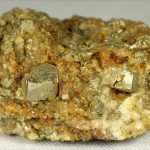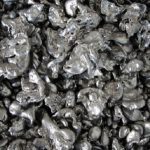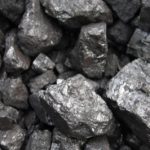| Location | Ontario, Canada |
| Commodities Primary | Gold |
| Commodities Secondary | Silver, Zinc,Copper, Nickel, Cobalt |
| Total Current Year Production | Period Ended December 31, 2019 |
| Gold; ounces | 786,000 |
| Silver; ounces | 1,656,000 |
| Zinc; pounds | 149,032,000 |
| Copper; pounds | 73,855,000 |
| Total Known Current and Historical Production | 1909 – 2019 |
| Gold, ounces | 80,349,000 |
| Silver; ounces | 315,340,000 |
| Zinc; pounds | 16,519,951,000 |
| Copper; pounds | 12,141,711,000 |
| Nickel; pounds | 49,727,000 |
| Cobalt; pounds | 27,000 |
| Total Known Compliant Reserves | Proven & Probable |
| Gold, ounces | 10,187,000 |
| Silver; ounces | 7,394,700 |
| Zinc; pounds | 385,364,000 |
| Copper; pounds | 192,682,000 |
| Nickel; pounds | 19,348,000 |
| Cobalt; pounds | 0 |
| Total Known Compliant Exclusive Resources | Measured & Indicated |
| Gold, ounces | 9,161,000 |
| Silver; ounces | 7,621,000 |
| Zinc; pounds | 509,803,000 |
| Copper; pounds | 375,177,000 |
| Nickel; pounds | 91,408,000 |
| Cobalt; pounds | 2,893,000 |
| Inferred | |
| Gold, ounces | 11,010,000 |
| Silver; ounces | 7,555,000 |
| Zinc; pounds | 588,044,000 |
| Copper; pounds | 204,921,000 |
| Nickel; pounds | 38,859,000 |
| Cobalt; pounds | 1,405,000 |
| Total Known Endowment | 1909-2019 |
| Gold, ounces | 110,707,000 |
| Silver; ounces | 337,910,700 |
| Zinc; pounds | 18,003,162,000 |
| Copper; pounds | 12,914,491,000 |
| Nickel; pounds | 199,342,000 |
| Cobalt; pounds | 4,325,000 |
*Total Known Endowment includes current and historical production and compliant reserves and resources Data compiled from DigiGeoData database,Ontario Mineral Deposit Inventory, technical reports and corporate websites DigiGeoData has compiled this information using best practices and does not warranty the completeness or accuracy. All data should be checked and verified before use
The Timmins mining camp remains as one of the most prolific in Canada, if not the world. By the end of 2017, cumulative historic production beginning in 1910, was approximately 75,500,000 ounces of gold. To accompany this impressive gold production was approximately 312,000,000 ounces of silver, 16,225,000,000 pounds of zinc, 11,993,000,000 pounds of copper and 82,000,000 pounds of nickel. The first recorded discovery of gold in quartz veins was by provincial geologists near Porcupine Lake in 1896. Starting in 1907, the area became home to dozens of prospectors who explored the areas around Porcupine Lake and the Frederick House River. The area was known as the Porcupine The Porcupine gold rush started in 1909 when Jack Wilson and Harry Preston discovered a hill of quartz with gold. They called the discovery the Big Dome which became the Dome mine. Later that same year Benny Hollinger and his partner Alex Gillies staked claims which would eventually become the Hollinger mine. Shortly after this, Sandy McIntyre (known as Alexander Olifant) staked claims just north of the Hollinger claims which eventually became McIntyre Mines. This completed the original discoveries of what were to become the “Big Three” gold mines. Most of the people who came to the Porcupine area settled around Porcupine Lake; the Dome Mine is situated one mile from the lake. Four miles down the road, around the McIntyre Mine, the hamlet of Schumacher (named after Frederick Schumacher, druggist and supplier of “miracle medicines” in a “dry” camp) grew. A mile from that site, the town of Timmins, which was in fact the company homes for employees of the Hollinger Mines, was founded in 1912. The arrival of the rail system in 1911 accelerated the growth of the Camp; until then, the trek to the Porcupine was done by canoe and by foot from Haileybury. That same year, (two days after the first train arrived in the Porcupine), the entire Camp was destroyed in the fire of 1911. Because of the importance of the gold discoveries, very few people abandoned the camp and the area was rebuilt in two months. In 1910, the Dome mine was the first to begin operations by sinking four shafts, the deepest being seventy-five feet. This was followed in the same year by the Hollinger mine. The McIntyre was the last of the three to go into operation in 1912. Production continued through the 1920s and 30s and helped shelter the area from the affects of the Great Depression. Mine production peaked between the 1940s and 50s but started a decline near the end of the 1950s. By the mid-1960s most of the mines in the area had closed. The prolific Hollinger mine closed in 1968 but reopened in 2015. The discovery of base metals at the Kidd Creek mine in the sixties resurrected a dying industry. It continues to be a significant producer. Gold prices began to rise in the late sixties. By the late1980s, gold was averaging around $400 a troy ounce. This increase in price and improvements in mining technology helped to start a new wave of mine openings. New gold production from 15 mines came on stream during the 80s along with reprocessing of tailings. Notable mines were the Holt, Holloway and Hoyle Pond. The Redstone nickel mine started production in 1989. Another 5 mines started production in the 1990s including the most notable being the Black Fox. New production continued in the new century in the Timmins area with another 5 mines. The Timmins West mine is the largest of these 5. Today companies continue to increase reserves and resources and use new technological advances to lower costs. Timmins will continue to be a significant contributor to the global mining sector.
The Timmins Mining Camp encompasses the eastern extents of the Abitibi greenstone belt in Ontario, which is overlain and intruded by Southern Province sedimentary and mafic intrusive rock, that are in turn overlain by Paleozoic carbonate-clastic sedimentary rocks and Quaternary glacial deposits. One main geologic feature has been successfully targeted for economic mineral deposits in the Timmins area over the past 100 years; the Porcupine–Destor Deformation Zone. Gold Mineralization Associated with the Porcupine-Destor Deformation Zone Gold mineralization in some of the producing mines in the Timmins Mining Camp is associated with the Porcupine–Destor Deformation Zone (PDDZ). The PDDZ is a major structural corridor that transects much of the Abitibi greenstone belt and is a long-lived composite deformation zone of early fold-thrust nappes and later transpressive fault arrays (Snyder et al. 2008). It is characterized by a broad, ductile to brittle-ductile, generally south-over-north vergent deformation zone that juxtaposes Abitibi volcano-sedimentary assemblages of different ages. North of the fault 2 distinct packages of mainly metasedimentary rocks are locally preserved, the older Porcupine (2690–2685 Ma, Houlé et al. 2008) and younger Timiskaming (2676–2670 Ma, Houlé et al. 2008) assemblages. Both packages of rocks were deposited while the PDDZ was active. Gold mineralization associated with the PDDZ in is characterized by quartz-carbonate vein systems typically caught up in faults associated with the later phases of deformation in the PDDZ. They affect even the youngest Timiskaming assemblage clastic sedimentary and felsic intrusive rocks, as well as the older supracrustal assemblages. Mineralized veins are commonly enveloped in wide carbonate alteration halos. Adapted From: Guindon, D.L., Farrow, D.G., Hall, L.A.F., Daniels, C.M., Debicki, R.L., Wilson, A.C., Bardeggia, L.A. and Sabiri, N. 2016. Report of Activities 2015, Resident Geologist Program, Kirkland Lake Regional Resident Geologist Report: Kirkland Lake and Sudbury Districts; Ontario Geological Survey, Open File Report 6318, 106p.







Copyright © 2021 DigiGeoData | Powered by ViaMarket
Data compiled from DigiGeoData database.
DigiGeoData has compiled this information using best practices and does not warranty the completeness or accuracy.
All data should be checked and verified before use